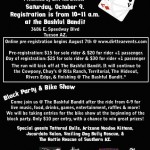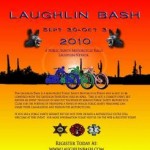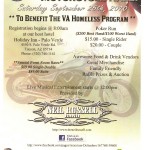P1 Special Report: Blood Lessons: Lessons learned from an off-duty officer involved in fatal shootout at a McDonald’s
by PoliceOne Contributor Scott Buhrmaster
Article submitted by PoliceOne member who would like to remain anonymous
In response to a recent Force Science News article ( Have Gun, Will Travel? ) discussing the issue of off-duty/concealed carry, a sergeant in California shared the following account of a horrific off-duty engagement he and his family unexpectedly fell into. The hard-earned lessons he shares may save your life in an off-duty encounter, so we hope you will take them to heart.
[Editor’s note: Because of the impact this incident has had on his family, this sergeant has asked for anonymity.]
He writes:
I had taken my family to a McDonald’s Restaurant on our way to a pool party. I was off-duty, in civilian clothes, and armed.
I was standing in line and oblivious (like all the other patrons) to the fact that an armed suspect had taken the manager hostage and was forcing her to open the safe in the restaurant’s office. One of the cashiers had seen this and I overheard her telling another employee that the business was being robbed.
At that time, I had approximately 15 years of experience and was a SWAT team member and use-of-force/firearms instructor. I had talked to my wife about such an occurrence and we had a preplanned response. When I told her to take the children and leave the building, she did not hesitate. I began quietly telling employees and patrons to leave. My thinking was to remove as many innocent bystanders as possible and then leave myself.
I thought that because I did not see the suspect enter he must have come in from a side door or employee entrance and I assumed (wrongly) that he would go out the same way. As I was standing near the front counter trying to get some of the kitchen help to get out, the suspect came from the office area and began running in my direction.
I immediately noted the large semi-automatic pistol in his hand. The distance was about 15 to 20 yards. I drew my weapon, announced myself and took a kneeling position behind the counter. Unfortunately, the suspect raised his weapon at me and the gunfight erupted. The suspect fired a total of 2 rounds in my direction. I fired 11, striking him 10 times.
My weapon was now empty and I ran from the line of fire to reload my spare magazine. I then approached the downed suspect and could tell that he was seriously wounded. It was right then that I considered that there might be more than one “bad guy” (the thought had not crossed my mind before this) and I began to scan the 360 to check.
I immediately noticed a small child lying behind me. I saw blood pooling under her head and knew at a glance she was dead. One of the bullets fired at me had struck this child. Unbeknownst to me, my family had tried to exit out the fire door, which was locked. My wife was still trying to get out when the shooting started and she pushed my kids under a table where they all witnessed the gunfight.
The end result was that the suspect died, I survived, but a 9-year-old girl did not.
I tell you this story because I think that this topic is of utmost importance. It is largely ignored in mainstream police training. I want to tell you some of the lessons I learned from this incident:
1. If you are going to carry a firearm off-duty, you should carry extra ammo. Security camera video of this incident revealed that I fired all 11 rounds from my Glock 26 in about 2 seconds. My extra mag held 17 rounds. Words cannot describe the emotion I felt when I slammed that mag into my weapon and was able to still be in the fight.
Mostly because of circumstances (distance) and my training, my rounds were on target. It could have happened differently and the reality is that most of us miss more than we hit when involved in a gun battle.
2. You cannot have the typical police mind-set in an off-duty situation. I ended up in this incident without a radio, without backup, without body armor, handcuffs, other force options and without taking the time to think it through. I was truly most frightened when the gunfight was over and I was standing there covering the suspect with my weapon in my T-shirt and shorts.
I was really worried that one of my own guys might not recognize me. I was worried too that there might be some other off-duty copper around who would think I was the bad guy.
The smartest, most responsible thing I could have done would have been to take care of my family first. I should have seen personally to their safety. If I had grabbed them and gone outside, I would have spared them this entire experience and that little girl would probably still be alive today.
Again, words cannot describe the emotions that we all went through after this incident. I recognized afterward that it could have been one of my children lying dead because of my actions. When you are off-duty your first responsibility is to your family. You should never forget this.
3. I survived this incident. Partly due to my training and tactics. Partly due to God’s grace and blind luck. But the other side of the coin is that I got into this incident because of my training. I switched immediately into “cop” mode without stopping to consider that I was at a great tactical disadvantage. Most of us are driven and dedicated to the point of self destruction and I think good cops die because we are taught to place our personal safety second when others are in danger.
Because I had never trained realistically for a situation like this, I was unprepared. Most of the guys I worked with then and now carry off-duty weapons. But few of them, if any, have really taken the time to engage in realistic training and preparation for how to handle an off-duty incident.
Training can be as simple as discussing these types of situations with your coworkers. Since this shooting, I have devoted at least one quarterly range session with my students to off-duty encounters and the associated considerations.
4. The responsibility of carrying a firearm is huge. I had devoted countless hours to training for the fight, but was not fully prepared for the aftermath. None of the training scenarios, books, films, etc. that I learned from touched upon the fact that when you take that gun out and decide to take action, 9-year-old kids can get killed. Even if you do everything by the book, use good tactics, and are within policy and the law, the outcome can still be negative.
You have to remember that the suspect does not go to the range and he does not practice rules of weapons safety. He does not care about what’s in his line of fire. If it’s you or him, you gotta do what you gotta do, but whether you’re on-duty or off-duty we need to train to look at the totality of the incident.
Letting the bad guy go because doing otherwise would place innocent people in grave danger needs to be more “socially acceptable” amongst our ranks. I think we’re starting to see more of this in the pursuit policies of most agencies and I have tried to carry this message over into my training and teaching.
I guess the bottom line here is that it’s good to be on “auto pilot” when it comes to tactics in these situations, but we can’t go on auto pilot in our assessment and examination of the environment and circumstances leading up to and during the event. On-duty mind-set and off-duty mind-set need to be strongly separated and the boundaries clear.
– A California Sergeant


